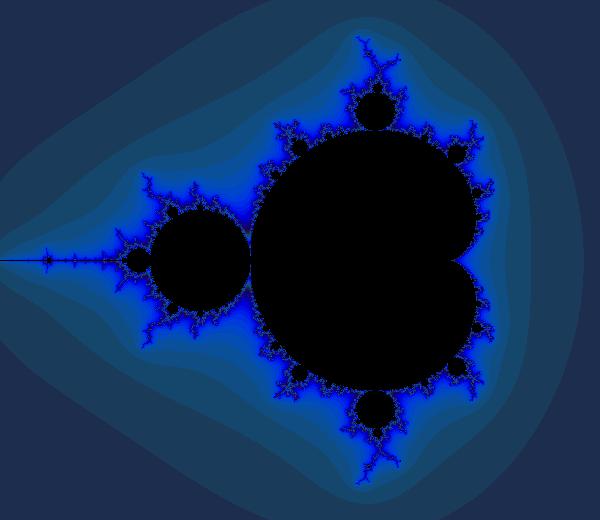1
2
3
4
5
6
7
8
9
10
11
12
13
14
15
16
17
18
19
20
21
22
23
24
25
26
27
28
29
30
31
32
33
34
35
36
37
38
39
40
41
42
43
44
45
46
47
48
49
50
51
52
53
54
55
56
57
58
59
60
61
62
63
64
65
66
67
68
69
70
71
72
73
74
75
76
77
78
79
80
81
82
83
84
85
86
87
88
89
90
91
92
93
94
95
96
97
98
99
100
101
102
103
104
105
106
107
108
109
110
111
112
113
114
115
116
|
# Mandelbrot Set
Visualizing the [Mandelbrot set](https://en.wikipedia.org/wiki/Mandelbrot_set)
doesn't have anything to do with machine learning, but it makes for a fun
example of how one can use TensorFlow for general mathematics. This is
actually a pretty naive implementation of the visualization, but it makes the
point. (We may end up providing a more elaborate implementation down the line
to produce more truly beautiful images.)
## Basic Setup
We'll need a few imports to get started.
```python
# Import libraries for simulation
import tensorflow as tf
import numpy as np
# Imports for visualization
import PIL.Image
from io import BytesIO
from IPython.display import Image, display
```
Now we'll define a function to actually display the image once we have
iteration counts.
```python
def DisplayFractal(a, fmt='jpeg'):
"""Display an array of iteration counts as a
colorful picture of a fractal."""
a_cyclic = (6.28*a/20.0).reshape(list(a.shape)+[1])
img = np.concatenate([10+20*np.cos(a_cyclic),
30+50*np.sin(a_cyclic),
155-80*np.cos(a_cyclic)], 2)
img[a==a.max()] = 0
a = img
a = np.uint8(np.clip(a, 0, 255))
f = BytesIO()
PIL.Image.fromarray(a).save(f, fmt)
display(Image(data=f.getvalue()))
```
## Session and Variable Initialization
For playing around like this, we often use an interactive session, but a regular
session would work as well.
```python
sess = tf.InteractiveSession()
```
It's handy that we can freely mix NumPy and TensorFlow.
```python
# Use NumPy to create a 2D array of complex numbers
Y, X = np.mgrid[-1.3:1.3:0.005, -2:1:0.005]
Z = X+1j*Y
```
Now we define and initialize TensorFlow tensors.
```python
xs = tf.constant(Z.astype(np.complex64))
zs = tf.Variable(xs)
ns = tf.Variable(tf.zeros_like(xs, tf.float32))
```
TensorFlow requires that you explicitly initialize variables before using them.
```python
tf.global_variables_initializer().run()
```
## Defining and Running the Computation
Now we specify more of the computation...
```python
# Compute the new values of z: z^2 + x
zs_ = zs*zs + xs
# Have we diverged with this new value?
not_diverged = tf.abs(zs_) < 4
# Operation to update the zs and the iteration count.
#
# Note: We keep computing zs after they diverge! This
# is very wasteful! There are better, if a little
# less simple, ways to do this.
#
step = tf.group(
zs.assign(zs_),
ns.assign_add(tf.cast(not_diverged, tf.float32))
)
```
... and run it for a couple hundred steps
```python
for i in range(200): step.run()
```
Let's see what we've got.
```python
DisplayFractal(ns.eval())
```

Not bad!
|
